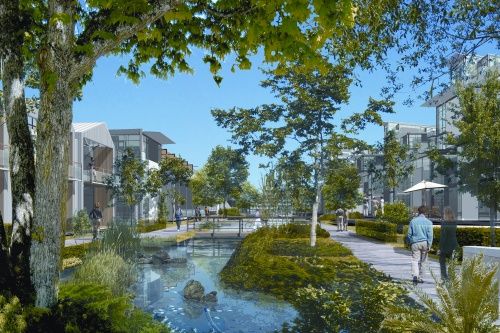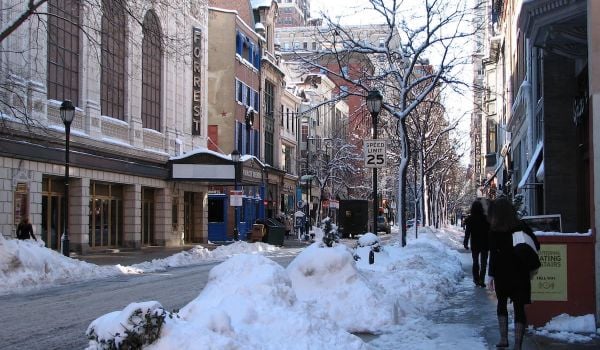Look at many large North American cities and you see a sea of suburban houses. Sprawl has become the norm. But it is costly, damages the environment and affects quality of life. A new generation of planners and architects is beginning to look at sustainable, human-centered solutions to the creeping suburbs.
There are several reasons for the rise of the suburbs. The planning structures put in place after WW II encouraged the construction of low-density neighborhoods. Low gas prices created a car-dependent culture. And most developers are resistant to changing the paradigm of the suburbs because it has worked for them.
The four architects profiled in this series offer their own analyses of how North America has come to face this situation, and how it might be solved.
Martin Neilsen is an architect with Busby Perkins + Will. He is interested in building centralized, self-contained communities and in finding ways that cities can use their spaces in more sustainable and efficient ways.
One issue for Neilsen is that suburban homeowners don’t pay the true cost for building their neighborhoods. “The reason that more suburbs are built is that we don’t pay the true cost of the infrastructure and the road network,” he says. “That’s never factored in and it’s not part of the developer’s cost so it’s not a cost that’s transferred back to the homeowner.”
The European model of planning appeals to Neilsen. “I think Europe is a good ten years ahead of North America in terms of change,” he says. “They don’t see sustainability in the same way we do. They don’t wear it on their sleeve. They live with it.”
One of the projects Neilsen was involved in at Busby Perkins + Will is a large development called Dockside, in British Columbia’s Victoria. This one-million square foot property makes its own energy and treats its own wastewater. It illustrates Neilsen’s ideas about self-contained neighborhoods.
“Dockside took the position that they would treat their own wastewater on site,” he says. “The system can actually take wastewater from surrounding industries and treat that water. Those industries use a lot of water and they pay for it so Dockside can actually sell back water to those industries.”
One of the issues around suburban development is getting local government to adopt more sustainable and efficient practices in constructing these areas. Neilsen says that one of the interesting elements of Vancouver’s urban renewal project was the impetus it received from the municipal government. “It [the project] was driven by visionary planning ideas at City Hall,” he says. “I’ve always argued that the West Coast is ahead of anywhere else in North America in terms of sustainable ideas and principles.”
Land developers have to be partners in changing the way cities are built, Neilsen says. He adds that a favorable real estate climate helps with empty land in inner-city neighborhoods.
He explains that Vancouver’s municipal government was able to push the costs of infrastructure onto developers by arguing that the new areas “are sitting on a piece of industrial land that has X value. If we resolve that to residential/mixed use/commercial, the value of that land will be three to five times what it is today.”
Tomorrow: The predominance of large, inefficient homes in suburban areas is something that architect Jonathan Davis wants to tackle with pieceHomes.
















